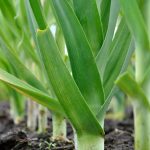Are you interested in growing your own vegetables, but don’t have access to a traditional outdoor garden? If so, then indoor vegetable gardening under lights may be the perfect solution for you.
By utilizing artificial lighting, you can create a thriving garden right in the comfort of your own home. In this article, we will explore the various aspects of indoor vegetable gardening under lights and provide you with all the information you need to get started on your own indoor gardening journey.
Indoor vegetable gardening offers a host of benefits, from providing fresh produce year-round to creating a beautiful and relaxing indoor space. Understanding these advantages can help motivate and inspire gardeners as they embark on their indoor gardening endeavors. Additionally, selecting the right vegetables for indoor cultivation is crucial for success in this unique gardening environment. We will delve into the best choices for indoor vegetable gardening and how to care for them under artificial lighting.
In order to successfully grow vegetables indoors, it’s important to choose the right lighting setup. The type of light used, its intensity, and duration are all critical factors that can determine the health and productivity of your plants. Properly setting up an ideal indoor gardening space is essential as well. With this comprehensive guide, you will learn everything you need to know about selecting the best lights and creating the perfect growing environment for your indoor vegetable garden.
Understanding the Benefits of Indoor Vegetable Gardening
Indoor gardening has been gaining popularity in recent years, and for good reason. There are numerous benefits to growing vegetables indoors under lights, which make it an attractive option for individuals who may not have access to outdoor garden space or who want to grow their own produce year-round.
Year-Round Growing
One of the primary advantages of indoor vegetable gardening under lights is the ability to grow plants regardless of the season. With the right equipment and setup, you can enjoy fresh vegetables in the dead of winter, when traditional outdoor gardening is not feasible.
Control Over Growing Conditions
Indoor gardening allows for complete control over the growing environment. This means you can optimize conditions such as temperature, humidity, and light exposure to ensure that your plants thrive. It also eliminates concerns about weather-related issues or pests that can wreak havoc on outdoor gardens.
Conservation of Space
For individuals living in urban areas or small homes with limited outdoor space, indoor vegetable gardening provides an opportunity to conserve space while still enjoying the benefits of homegrown produce. By utilizing vertical gardening methods and compact setups, you can maximize your indoor growing area and cultivate a variety of vegetables without needing a large plot of land.
Choosing the Right Vegetables for Indoor Gardening
When it comes to choosing the right vegetables for indoor gardening under lights, there are several factors to consider. Not all vegetables thrive in indoor environments, so it’s important to select ones that are well-suited for this type of growing. Some vegetables require more space, sunlight, and a longer growing season than can be provided indoors. However, there are plenty of options that are perfect for indoor vegetable gardening under lights.
Factors to Consider
When choosing vegetables for indoor gardening, it’s important to consider the available space, light conditions, and the specific needs of each plant. Some vegetables, such as leafy greens like lettuce, spinach, and kale, thrive in lower light conditions and can easily be grown indoors. Root vegetables like carrots and beets can also do well in containers with the right depth. On the other hand, large vining plants like tomatoes and cucumbers may require more space and support structures.
Best Vegetables for Indoor Gardening
There are several vegetables that are particularly well-suited for indoor gardening under lights. Herbs like basil, parsley, and chives are excellent choices for indoor gardening due to their compact size and relatively low light requirements. Other great options include microgreens such as arugula and radish sprouts, which grow quickly and add a fresh burst of flavor to salads and sandwiches. Additionally, compact varieties of peppers and dwarf varieties of tomatoes can also thrive in an indoor environment.
Considerations for Success
In order to have a successful indoor vegetable garden under lights, it’s important to choose vegetables that match the conditions you can provide. It’s also helpful to research specific varieties that have been proven successful by other indoor gardeners. By selecting the right vegetables and paying attention to their individual needs, you can create a flourishing indoor garden that provides fresh produce year-round.
Selecting the Best Lights for Indoor Gardening
When it comes to indoor vegetable gardening under lights, selecting the best lights is crucial for the success of your garden. The right lighting can make all the difference in the growth and development of your vegetables. There are a few key factors to consider when choosing the best lights for indoor gardening.
First and foremost, it’s important to choose lights that provide the necessary spectrum for plant growth. Different stages of plant growth require different light spectrums, so it’s essential to select lights that can provide both full spectrum and specific spectrum options. LED grow lights are a popular choice for indoor vegetable gardening under lights as they can be customized to provide the ideal light spectrum for each stage of plant growth.
In addition to the light spectrum, it’s also important to consider the intensity and duration of light exposure. Most vegetables require at least 6-8 hours of direct light per day, so choosing lights with adjustable intensity and timers can help you easily control the light exposure for your plants.
Another factor to consider is the energy efficiency and heat output of the lights. LED grow lights are known for being energy efficient and producing minimal heat, which is beneficial for indoor gardening as it helps maintain a consistent temperature in your indoor gardening space.
By taking these factors into consideration, you can select the best lights for your indoor vegetable garden, providing your plants with optimal conditions for healthy growth and abundant harvests.
Setting Up the Ideal Indoor Gardening Space
When it comes to setting up the ideal indoor gardening space for your vegetable garden under lights, there are a few key factors to consider. First and foremost, you’ll need to find an area in your home that receives an adequate amount of light. South or west-facing windows are ideal for natural light, but if those aren’t available, you’ll need to rely on artificial lighting.
In addition to light, temperature and humidity are also important factors to consider when setting up your indoor gardening space. Most vegetables thrive in temperatures between 65-75°F, so it’s essential to make sure the area is not too hot or too cold. You’ll also want to ensure that the humidity levels are appropriate for the plants you choose to grow.
Another crucial aspect of creating the perfect indoor gardening space is providing adequate airflow. Proper ventilation will help prevent mold and mildew from forming on your plants and ensure that they have enough carbon dioxide for photosynthesis. Consider using a small fan or opening a window periodically to keep the air circulating.
Finally, make sure that your indoor gardening space is easily accessible for tending to your plants. Whether it’s a dedicated room, a corner of your living space, or a specialized grow tent, having a convenient setup will make it easier for you to maintain and enjoy your indoor vegetable garden under lights.
| Key Factors | Considerations |
|---|---|
| Light | Natural vs Artificial lighting |
| Temperature and Humidity | Ideal range and maintenance |
| Airflow | Ventilation methods |
| Accessibility | Ease of tending to plants |
Tips for Maintaining Healthy Indoor Vegetable Gardens Under Lights
Maintaining a healthy indoor vegetable garden under lights requires attention to detail and regular care. Here are some tips to help you keep your indoor garden thriving:
1. Regular watering: It’s essential to keep the soil in your indoor vegetable garden consistently moist. Check the moisture level regularly and water as needed, making sure not to overwater or underwater your plants.
2. Nutrient management: Indoor plants may require more nutrients than their outdoor counterparts due to the limited space and resources available to them. Consider using a balanced fertilizer specifically formulated for vegetables to ensure that your plants receive the necessary nutrients for healthy growth.
3. Proper ventilation: Adequate airflow is crucial for preventing mold and mildew from developing in an indoor gardening space. Consider using fans or opening windows periodically to promote air circulation.
4. Pest control: Keep an eye out for common pests such as aphids, spider mites, and whiteflies, which can pose a threat to your indoor vegetable garden. Consider natural pest control methods such as introducing beneficial insects or using organic pesticides to keep these pests at bay.
5. Regular pruning: Maintaining proper airflow and preventing overcrowding is important for the health of your indoor vegetable garden. Regularly prune any dead or diseased foliage, as well as any overcrowded areas, to promote healthy growth.
By implementing these tips for maintaining a healthy indoor vegetable garden under lights, you can enjoy a successful harvest of fresh produce right in your own home. With proper care and attention, your indoor garden can provide you with a bountiful supply of delicious and nutritious vegetables throughout the year.
Common Issues and How to Solve Them in Indoor Vegetable Gardening
One common issue that indoor vegetable gardeners often encounter is insufficient light. Without adequate light, plants may become leggy, fail to produce flowers or fruit, or even die prematurely. This can be solved by ensuring that your indoor garden receives at least 12-16 hours of high-quality light per day.
You can achieve this by using full-spectrum LED grow lights, which are designed to provide the specific wavelengths of light needed for plant growth. Placing the lights at the correct distance from the plants and adjusting the duration of light exposure can also help address this issue.
Another challenge that indoor vegetable gardeners face is poor air circulation. Stagnant air can lead to an increased risk of pests and diseases, as well as hinder proper pollination and fruit development. To solve this problem, consider using a small fan to promote air circulation within your indoor gardening space. Additionally, opening windows occasionally or using an exhaust fan can help bring in fresh air and expel stale air.
Maintaining proper humidity levels is also crucial for successful indoor vegetable gardening under lights. Low humidity can lead to problems such as leaf browning or curling, while high humidity can encourage mold and mildew growth. To address this issue, you can use a humidifier to increase moisture levels in the air or use a dehumidifier if the air is too moist.
| Common Issue | Solution |
|---|---|
| Insufficient Light | Use full-spectrum LED grow lights, adjust distance and duration of light exposure |
| Poor Air Circulation | Use a small fan, open windows occasionally or use an exhaust fan |
| Improper Humidity Levels | Use a humidifier or dehumidifier as needed |
Harvesting and Enjoying the Fruits of Your Indoor Vegetable Garden
So, you’ve put in the hard work of setting up your ideal indoor vegetable garden under lights, and now it’s time to reap the rewards. Harvesting your homegrown vegetables is not only satisfying but also ensures that you are consuming fresh, pesticide-free produce. Here are some tips for harvesting and enjoying the fruits of your indoor vegetable garden:
- Harvest at the right time: Each vegetable has its own optimal harvesting time. Make sure to research and understand when your vegetables are ready to be harvested to ensure they are flavorful and nutrient-rich.
- Use the proper tools: Some vegetables require sharp pruners or scissors for cutting while others can simply be plucked by hand. Using the right tools can prevent damage to the plants and ensure a clean harvest.
- Enjoy your harvest: There’s nothing quite like preparing a meal with ingredients straight from your own indoor garden. Whether it’s a simple salad or a hearty stir-fry, savoring the flavors of your labor is one of the greatest joys of indoor vegetable gardening under lights.
After enjoying the fruits of your labor, don’t forget to take note of what worked well and what didn’t in your indoor gardening efforts. This will help you make adjustments for future planting and harvesting.
Remember that as with any type of gardening, there may be some trial and error involved, so don’t get discouraged if certain vegetables don’t turn out as expected. With patience and perseverance, you’ll be able to fine-tune your indoor vegetable gardening skills and enjoy a bountiful harvest year-round.
Conclusion
In conclusion, embarking on the journey of indoor vegetable gardening under lights can be a rewarding and fulfilling experience. The convenience of being able to grow your own fresh produce year-round, regardless of outdoor climate conditions, is truly invaluable. Not only does indoor gardening provide a sustainable and cost-effective alternative to store-bought vegetables, but it also adds a touch of natural beauty to any indoor space.
By understanding the benefits of indoor vegetable gardening and carefully selecting the right vegetables for this purpose, you can create a thriving and productive garden in your own home. The key is to choose the best lights for indoor gardening and set up an ideal space that provides your plants with the necessary light, warmth, and humidity they need to thrive.
With proper maintenance and care, you can overcome common issues that may arise and enjoy a bountiful harvest of delicious, homegrown vegetables.
In embracing indoor vegetable gardening under lights, you have the opportunity to not only enhance your living environment but also to cultivate a deeper connection to nature. Whether you are new to gardening or have years of experience in outdoor cultivation, indoor vegetable gardening offers a unique and rewarding way to nurture plant life within your home. So why wait? Start your own indoor vegetable garden today and reap the countless benefits it has to offer.
Frequently Asked Questions
What Vegetables Can I Grow Indoors Under Grow Lights?
You can grow a variety of vegetables indoors under grow lights, including leafy greens like lettuce, spinach, and kale. Herbs like basil, oregano, and parsley also thrive under indoor grow lights.
How Many Hours of Light Do Indoor Vegetables Need?
Indoor vegetables typically need around 14-16 hours of light each day to grow properly. It’s important to mimic the natural daylight cycle for the best results, so using a timer for your grow lights can help ensure your plants get the right amount of light.
Will Indoor Plants Grow Under LED Lights?
Yes, indoor plants can definitely grow under LED lights. In fact, LED lights are a popular choice for indoor growing because they are energy-efficient and produce very little heat. Just be sure to choose LED lights specifically designed for plant growth to ensure your indoor plants thrive.

If you’re looking to get into vegetable gardening, or are just looking for some tips on how to make your current garden better, then you’ve come to the right place! My name is Ethel and I have been gardening for years. In this blog, I’m going to share with you some of my best tips on how to create a successful vegetable garden.





